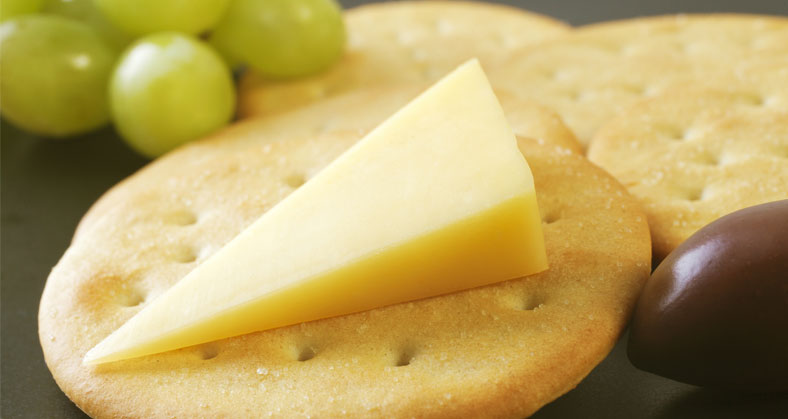Cheese- who doesn’t like it? Not many…in fact, there are some people who seem unable to go a day without it! Whether on a sandwich, salad, burger, crackers, potato, or even fries, cheese is popping up everywhere! At the turn of the 21st century, cheese consumption nearly tripled from 1970. Unfortunately, this cheese over-indulgence may come at a cost for some in terms of health. If you are trying to limit your sodium and saturated fat intake, yet are NOT willing to go cold turkey on cheese, you should do yourself a favor by monitoring your intake or opting for the healthier cheese varieties.
Cheese is produced in many different varieties including low fat and low sodium. The problem with these “health conscious” cheeses is that people tend to eat more because of the lower fat/sodium content or because the taste is not as satisfying as the original version. If you eat double the serving size of the low sodium or low fat cheese, you have defeated the purpose! Each person is different and you must choose the food item that will satisfy your cravings and eat it mindfully so that you will be satisfied by a small portion – which will not be detrimental to your health. One piece of regular cheese will not give you hyptension or make you gain weight. Mindlessly shoveling in ounce after ounce of cheese will! Think about this when choosing your cheese of choice.
Read on to learn about the nutritional differences between numerous cheeses.
NUTRITIONAL FACTS AND FIGURES
Although cheese can provide great pleasure to the taste buds, it can negatively affect health if consumed in excess due to its notorious sodium and fat content. Hypertension (or high blood pressure) is extremely common among Americans and heart disease is the number one cause of death in America.
Although cheese is high in fat and sodium, it also provides a healthy dose of some beneficial nutrients. A one-ounce slice of cheese can provide the following percentages of an adult’s daily recommended nutritional intake:
- 20% Calcium
- 15% Phosphorus
- 14% Protein
- 6% Riboflavin
- 6% Zinc
- 4% Vitamin B12
Cheese is also a good source of vitamins A and D.
The nutrition composition of cheese varies greatly depending on the manufacturing process and the type of milk used. Most cheeses provide about 7 grams of protein per ounce. The hard, processed cheeses are usually highest in fat, though the sodium content can vary greatly among all types. Swiss and Ricotta (part-skim) are among the lowest in sodium, and Boar’s Head No Salt Added Natural Swiss is an especially good choice. Ricotta (part skim) and Feta are the lowest in fat content. Be wary of some of the “lite” processed cheeses that are loaded with sodium.
Cheese is not the only choice. If you are not a fan of cheese, spice up your diet by substituting salsa, pine nuts, avocado, hummus or raw veggies in place of cheese. Can you think of alternative toppings?
ALYSE’S ADVICE
Although most cheeses supply a hefty dose of sodium and saturated fat, that does not mean all you “cheese lovers” out there have to practice complete abstinence. Cheese can be included in a healthy diet, as long as it is done so in moderation and eaten mindfully. Monitor your portion and how often you eat cheese. Cheese is a very rich food – if you’re listening to your body cues, a little will go a long way.

